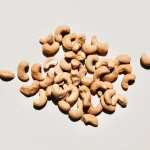Estimated Reading Time: 7 minutes
EEer feel like you’re stuck in a culinary rut? You know, the same old meals, week after week, leaving you craving something… more?
Maybe you’re looking to boost your protein intake, embrace a more sustainable lifestyle, or just discover some exciting new flavors.
If so, you’re in the right place.
Today, we’re diving deep into the world of plant-based protein meal ideas, exploring how you can create vibrant, satisfying dishes that are both delicious and incredibly good for you.
Did you know that a well-planned plant-based diet can actually provide more than enough protein for your needs, even if you’re an athlete?
(Source: ncbi.nlm.nih.gov)
Beyond the nutritional benefits, the beauty of plant-based eating lies in its versatility.
The possibilities are endless, allowing you to explore global cuisines, experiment with exciting ingredients, and truly personalize your meals.
Let’s get started!
Before we jump into meal ideas, let’s briefly touch on the stars of the plant-based protein show.
We’re not talking about bland tofu and boring beans anymore; the landscape of plant-based protein is rich and diverse.
Think lentils, chickpeas, quinoa, edamame, nuts, seeds, and various soy products.
These are your building blocks, the ingredients that will form the backbone of your delicious and nutritious meals.
Interestingly, while animal protein is often touted for its’complete’amino acid profile, you don’t need to worry about perfectly matching every amino acid in a single meal.
By eating a variety of plant-based protein sources throughout the day, you’ll easily meet your needs.
This is a crucial point that’s often misunderstood. So, what are some of the best foods to consider?
Here’s a quick rundown of some of the most readily available and protein-packed plant-based foods:
Remember that the specific protein content can vary slightly depending on the preparation and type of food.
Now, let’s get to the fun part: the meal ideas!
These recipes are designed to be relatively easy to prepare, satisfying, and adaptable to your own preferences.
I’ve personally tried many of these, and they are crowd-pleasers.
Don’t be afraid to experiment, swap ingredients, and discover your own favorite combinations.
After all, the best plant-based protein meal ideas are the ones you love to eat.
Breakfast is the perfect opportunity to kickstart your protein intake.
Many people make the mistake of having very low-protein breakfasts, which leads to early cravings and energy crashes. Consider these ideas:
Lunch needs to keep you satisfied and energized until dinner. These suggestions are both easy to pack and provide sustained energy:
Dinner is your chance to get creative and create truly enjoyable meals. Don’t think plant-based means boring!
I’ve been plant-based for years, and my dinner options are more diverse and satisfying than ever before. Here’s a selection:
Don’t forget the snacks and side dishes!
These can help you maintain consistent protein intake throughout the day and prevent those mid-afternoon slumps.
Now that you have some concrete plant-based protein meal ideas, let’s talk about how to implement them successfully.
Planning is key, especially if you’re new to plant-based eating. Don’t worry; you don’t need to be a culinary expert to get started.
I find a little bit of pre-planning each week makes all the difference. Here are a few tips to help you succeed:
![Based in Plant-Based Protein Meal Ideas: Delicious & Nutritious [2025] based for plant-based protein meal ideas: delicious & nutritious [2025]](https://www.trendynutritionhub.com/wp-content/uploads/replace/76f432a86809039b7b4dd77fac519824.png)
One of the best pieces of advice I ever received was, “Don’t try to change everything all at once.” Start small.
Maybe try incorporating one or two new plant-based meals into your week.
As you get more comfortable, you can gradually increase the proportion of plant-based meals in your diet.
Eating plant-based is about so much more than just protein intake.
It’s a holistic approach to wellness that can have a profound impact on your overall health and well-being.
Several studies have shown the benefits of plant-based diets, including a reduced risk of heart disease, type 2 diabetes, and certain cancers.
Furthermore, plant-based diets are generally lower in saturated fat and cholesterol, which can contribute to better cardiovascular health.
The added bonus is the positive impact on the environment: plant-based diets are generally associated with a smaller environmental footprint.
It’s a win-win!
While plant-based diets offer tremendous health benefits, it’s essential to be mindful of a few key considerations.
One common concern is ensuring you’re getting enough of certain nutrients that are more readily available in animal products, such as vitamin B12, iron, and omega-3 fatty acids.
You can usually get enough nutrients by eating a balanced diet, including fortified foods or supplements as needed.
Consult with a healthcare professional or a registered dietitian if you have any specific concerns about your nutritional needs.
A healthy diet begins with knowledge.
As we’ve seen, the world of plant-based protein meal ideas is vast, varied, and incredibly exciting.
It’s about more than just what you eat; it’s about embracing a lifestyle that prioritizes health, sustainability, and flavor.
Remember, this isn’t about deprivation; it’s about abundance.
It’s about discovering new ingredients, exploring new cuisines, and creating meals that nourish your body and delight your taste buds.
Why not try a new recipe this week? Start small, experiment, and have fun. Your health, your taste buds, and the planet will thank you!
Ready to keep your health journey going strong? Join our newsletter for weekly health tips!
We’ll deliver valuable insights, recipes, and inspiration right to your inbox, helping you stay motivated and informed.
{
“@context”: “https://schema.org”,
“@type”: “Article”,
“headline”: “Article Title”,
“description”: “Article description”,
“image”: “Featured image URL”,
“author”: {
“@type”: “Person”,
“name”: “Author Name”
},
“publisher”: {
“@type”: “Organization”,
“name”: “Site Name”,
“logo”: {
“@type”: “ImageObject”,
“url”: “Logo URL”
}
},
“datePublished”: “Publication Date”,
“dateModified”: “Last Modified Date”
}
Frequently Asked Questions
Are plant-based proteins complete proteins? If not, how do I ensure I get all essential amino acids?
While not all plant-based proteins are’complete'(containing all essential amino acids), this isn’t a major concern. By consuming a variety of plant-based protein sources throughout the day, you can easily meet your needs.
Combining different sources, such as beans and rice, is one way to ensure you’re getting all the essential amino acids. The key is diversity, ensuring your meals contain a mix of foods like legumes, grains, nuts, and seeds. Think of your meals as collaborative efforts, not single-star performances.
How much plant-based protein do I need per day?
The recommended daily protein intake varies depending on factors like your activity level, age, and overall health. As a general guideline, adults need about 0.8 grams of protein per kilogram of body weight. For example, if you weigh 70 kg (154 lbs), you’d need about 56 grams of protein per day.
Active individuals or those looking to build muscle may need more. Consulting a registered dietitian can help you determine the right amount for your individual needs. Remember that excess protein is usually used as energy or stored as fat, so knowing the correct amount is crucial to maximize the health benefits.
Can I get enough iron and B12 on a plant-based diet?
Yes, you can absolutely get enough iron and B12 on a plant-based diet, though it requires some planning. Iron is available in many plant-based foods, such as lentils, spinach, and fortified cereals. However, the iron from plant sources (non-heme iron) isn’t absorbed as well as iron from animal sources.
To enhance absorption, consume iron-rich foods with vitamin C (citrus fruits, bell peppers). Vitamin B12 is primarily found in animal products, so vegans and vegetarians must supplement or consume fortified foods like nutritional yeast, plant-based milk, or breakfast cereals.
What are the best plant-based protein powders?
The best plant-based protein powder depends on your personal preferences and needs.
Popular options include pea protein (easily digestible and offers a complete amino acid profile), soy protein (another complete protein with a neutral taste), brown rice protein (often gluten-free), and hemp protein (provides fiber and healthy fats).
Consider the taste, texture, protein content, and any added ingredients. It’s also important to check for third-party certifications (such as NSF or Informed-Sport) to ensure product quality and purity.
How do I make plant-based meals taste better?
Flavor is key! Don’t be afraid to experiment with herbs, spices, and seasonings. Think about using flavorful marinades and sauces. Roasting vegetables brings out their natural sweetness, and toasting nuts and seeds intensifies their flavor.
Adding a squeeze of lemon juice or a splash of vinegar can brighten up a dish, and remember to taste and adjust the seasoning as you go. One of my favorite tricks is using umami-rich ingredients like nutritional yeast or miso paste to add depth and complexity to dishes.
Is it possible to be both healthy and happy on a plant-based diet?
Absolutely! The key is to find foods you genuinely enjoy and to be flexible with your approach. Plant-based eating can be incredibly delicious, and the variety is astounding. Focus on whole, unprocessed foods as much as possible, and remember that moderation is always key. It’s also important to be kind to yourself.
There will be times when you may not meet your ideal, but every plant-based meal counts, and every small step is a step in the right direction. A balanced approach and a positive mindset are the ultimate keys to success and enjoyment.
document.addEventListener(‘DOMContentLoaded’, function() {
// 调整社交分享按钮位置
var sharingContainer = document.querySelector(‘.sharedaddy.sd-sharing-enabled’);
var recommendedReading = document.querySelector(‘h2:contains(“Recommended Reading”)’);
if(sharingContainer && recommendedReading) {
// 移动社交分享按钮到推荐阅读上方
var parent = recommendedReading.parentNode;
parent.insertBefore(sharingContainer, recommendedReading);
}
});


![Unlock Vibrant Health: Daily Habits for a Natural Lifestyle [2025] unlock for unlock vibrant health: daily habits for a natural lifestyle [2025]](https://www.trendynutritionhub.com/wp-content/uploads/2025/11/temp_unlock_1763341417-150x150.webp)



![Clean Beauty Brands for Sensitive Skin: Your Ultimate Guide [2025] non toxic beauty for clean beauty brands for sensitive skin: your ultimate guide [2025]](https://www.trendynutritionhub.com/wp-content/uploads/2025/11/temp_non_toxic_beauty_1763340997-150x150.webp)



